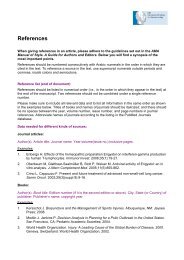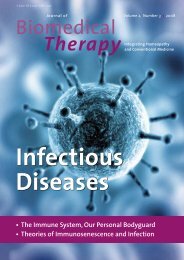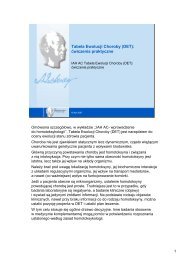Types of Homotoxins
Types of Homotoxins
Types of Homotoxins
You also want an ePaper? Increase the reach of your titles
YUMPU automatically turns print PDFs into web optimized ePapers that Google loves.
Atmosphere - pollution<br />
• Carbon dioxide is the gas that has shown the largest increase in<br />
the atmosphere.<br />
• Emission is increasing at the rate <strong>of</strong> 5% every 10 years.<br />
• In the last 200 years it has increased by around 25%<br />
© IAH 2007<br />
18<br />
Carbon dioxide is an end product in organisms that obtain energy from breaking<br />
down sugars or fats with oxygen as part <strong>of</strong> their metabolism, in a process known<br />
as cellular respiration. This includes all plants, animals, many fungi and some<br />
bacteria. In higher animals, the carbon dioxide travels in the blood from the<br />
body's tissues to the lungs where it is exhaled. In plants using photosynthesis,<br />
carbon dioxide is absorbed from the atmosphere.<br />
Carbon dioxide content in fresh air varies and is between 0.03% (300 ppm) to<br />
0.06% (600 ppm), depending on location and in exhaled air approximately 4.5%.<br />
When inhaled in high concentrations (greater than 5% by volume), it is<br />
immediately dangerous to the life and health <strong>of</strong> plants, humans and other<br />
animals. The current threshold limit value (TLV) or maximum level that is<br />
considered safe for healthy adults for an 8-hour work day is 0.5% (5000 ppm).<br />
The maximum safe level for infants, children, the elderly and individuals with<br />
cardio-pulmonary health issues would be significantly less.<br />
As in modern times forests have to move for industrialization the reverse <strong>of</strong> CO 2<br />
to oxygen is decreased with higher peak concentrations in industrial areas as<br />
consequence.<br />
18
















